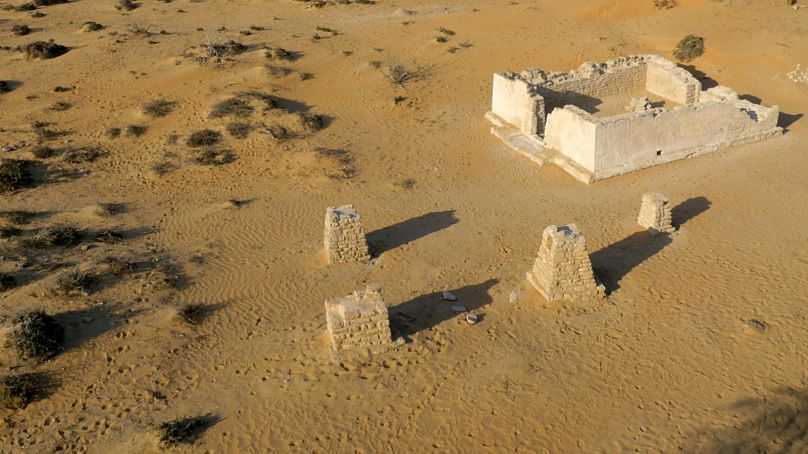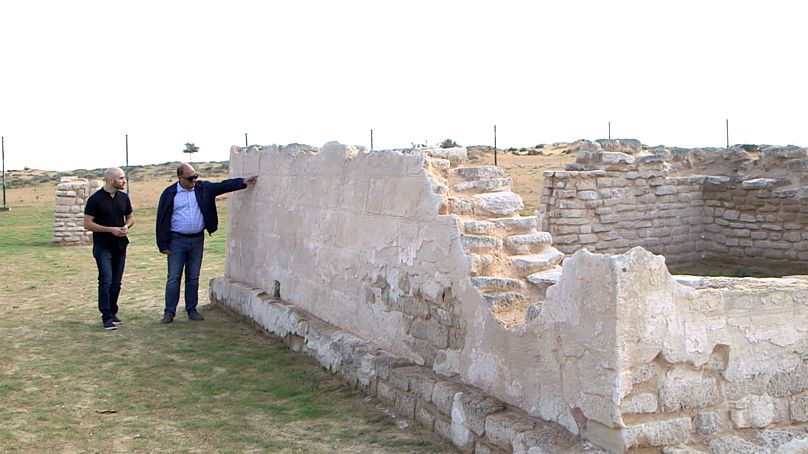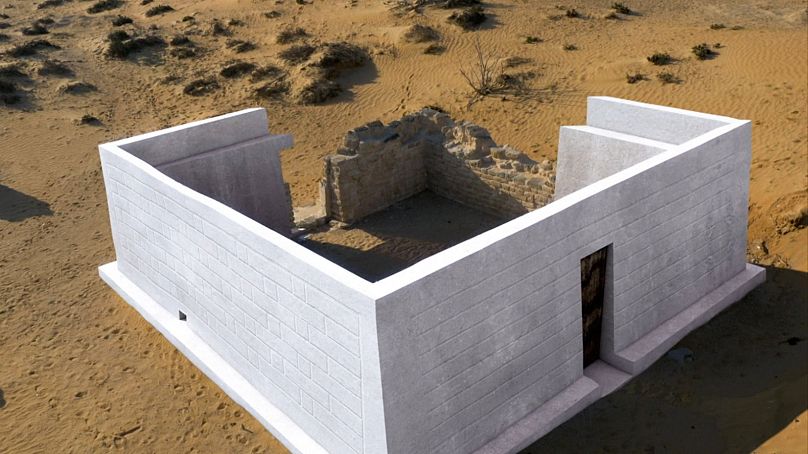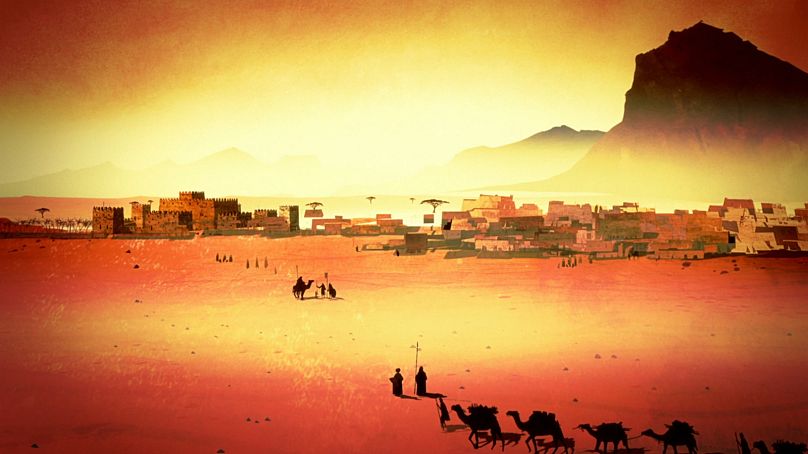The lost port city of Ed Dur, once buried in sand, was discovered in the 1970s in the emirate of Umm Al Quwain in the United Arab Emirates.
The lost port city of Ed Dur, once buried in sand, was discovered in the 1970s in the emirate of Umm Al Quwain in the United Arab Emirates.
Since then, archaeologists have been unearthing remnants of civilizations dating back to the prehistoric period of Mesopotamia, according to UNESCO.
The area’s most notable ruin is the pagan Shamash temple, which once stood nearly two thousand years ago.
Aramaic inscriptions in the temple revealed one word with clarity – Shamash, which means sun, and is believed to be the name of the god people who lived there worshiped.
The structure was uncovered in the 1980s by Belgian scientists, and since then, it has suffered years of erosion at the hand of the elements.
In 2016, Dr. Zaki Aslan and his team at the International Center for Preservation and Restoration of Cultural Property at the Sharjah regional office (ICCROM-Sharjah), took on the task of restoring the structure.
“This temple is unique,” says Dr. Aslan, ICCROM-Sharjah’s regional director, while taking Euronews to the site that remains closed to the public.
“It’s from the first century and there is nothing actually compared to it apart from two temples from the Hellenistic period in Egypt and one in Persia.”
Building a foundation
Dr. Aslan highlights how builders of the time applied a smooth plaster, covering the rough beach stone foundation and creating an illusion of carved stone on the temple’s outside walls.
To recreate this decorative plaster, Dr. Aslan and his team used nanotechnology to identify components such as sand and lime mortar for its restoration
Using such levels of accuracy, says the archeologist, is key to unlocking the temple’s true story.
“We are trying to instill this culture of conservation and restoration,” he says.
“There is a tendency to look into conservation as reconstruction sometimes. We try to avoid falsification of history by way of doing the restoration.”
Animating the past
Building upon the archaeologists’ work, others are looking to fill in the gaps and bring the structure back to life, allowing viewers to step into its world using CGI technology.
“Archaeology is probably not the most attractive thing to look at. You’re just seeing remnants of what’s left from the past,” says Hanna Makki, the head of documentary at Image Nation Abu Dhabi, who has been working on a historical five-part series about the UAE.
“What the CGI does, the light AR scanning, it gives it that visceral experience that people, especially that young people today, can hopefully relate to,” she explains.
Working closely with archaeologists for authenticity, Makki is looking to make the past more relatable.
She uses animation to recreate what it was like for African, Persian, and Mesopotamian traders who were thought to have conducted business in the former bustling port city of Ed Dur during the pre-Islamic era.
In the wider UAE, she’s also mixing facts and fun in edutainment, animating life stone etchings of snakes thought to be from Iron Age settlements which currently lay in the emirate of Fujairah’s Wadi Saham.
It’s believed that at one time in history, the area’s inhabitants worshipped serpents, believing them to be linked to underground resources, like precious water.
SEEN ON SOCIAL MEDIA: SIGHTSEEING IN THE UAE
Lisa from France took a vacation in the UAE and especially liked Al Jahli Fort in the emirate of Al Ain.















